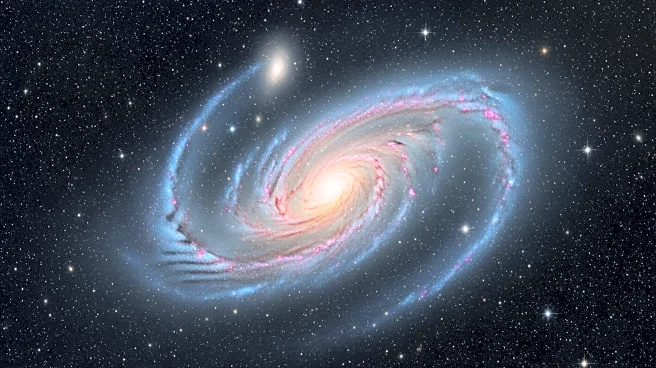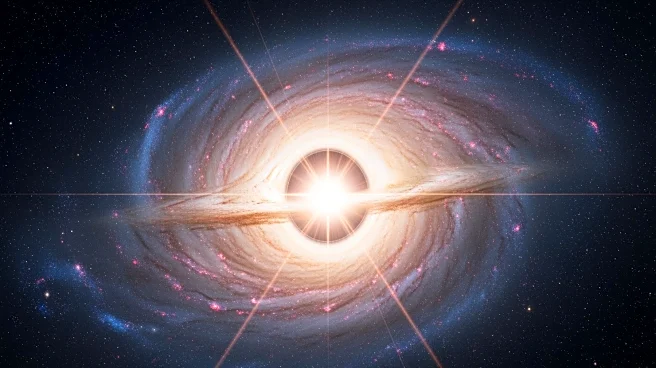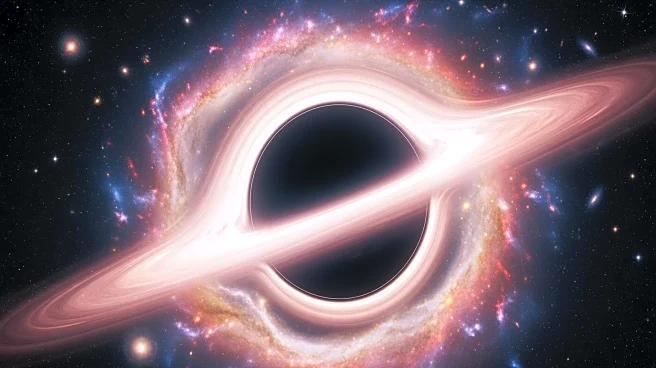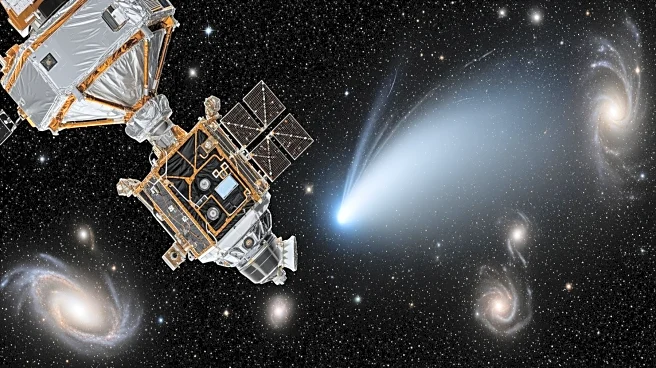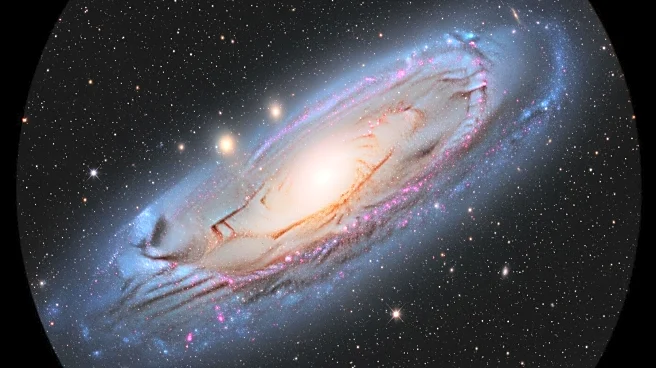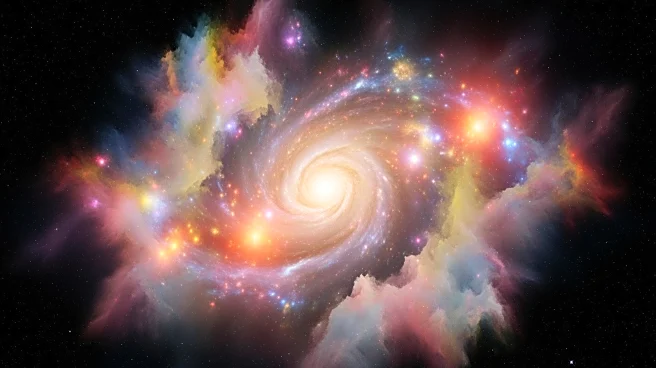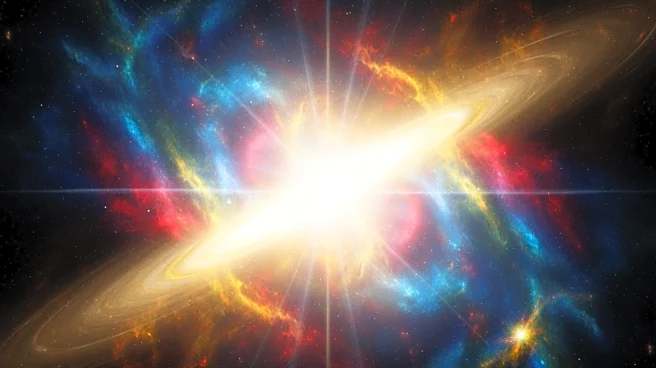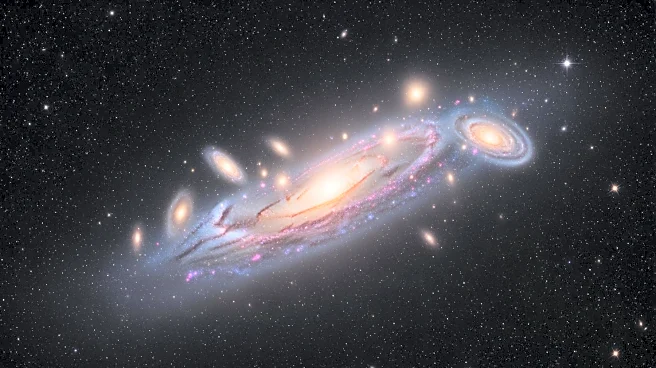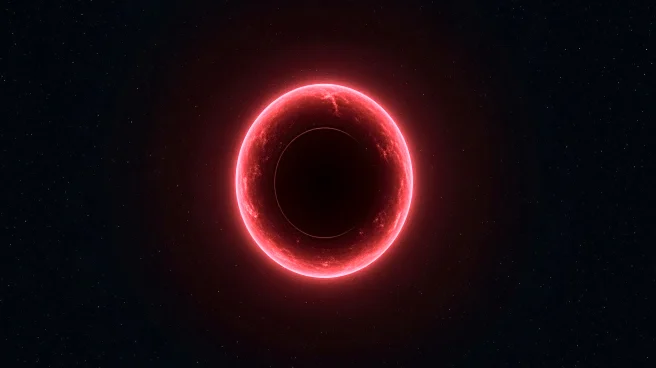What's Happening?
The Vera C. Rubin Observatory has discovered a stellar stream extending from the galaxy Messier 61, suggesting it once tore apart a smaller galaxy. This finding was made using the observatory's colossal
camera during its initial test phase. Messier 61, located in the Virgo Cluster, is known for its starburst activity and has been studied extensively by astronomers using telescopes like the James Webb Space Telescope and the Hubble Space Telescope. Despite previous studies, the stellar stream had not been detected until now, marking a significant discovery in the field of astronomy.
Why It's Important?
The discovery of the stellar stream in Messier 61 is crucial for understanding the history and dynamics of galaxies. Stellar streams are remnants of smaller galaxies that have been disrupted and absorbed by larger ones, providing insights into galactic evolution and interaction. This finding highlights the capabilities of the Vera C. Rubin Observatory in uncovering previously unseen cosmic features, potentially leading to a reevaluation of Messier 61's history. The observatory's ability to detect such features promises to advance the study of galaxy formation and the processes that shape the universe.
What's Next?
With the Vera C. Rubin Observatory set to begin its official scientific survey, astronomers anticipate discovering more stellar streams and other cosmic phenomena. The observatory's advanced imaging capabilities will enable detailed studies of galaxy structures and interactions, contributing to a deeper understanding of the universe. Researchers will likely focus on analyzing the newly discovered stellar stream in Messier 61 to determine its origins and impact on the galaxy's development. This discovery sets the stage for future explorations that could reshape current theories in astronomy.
